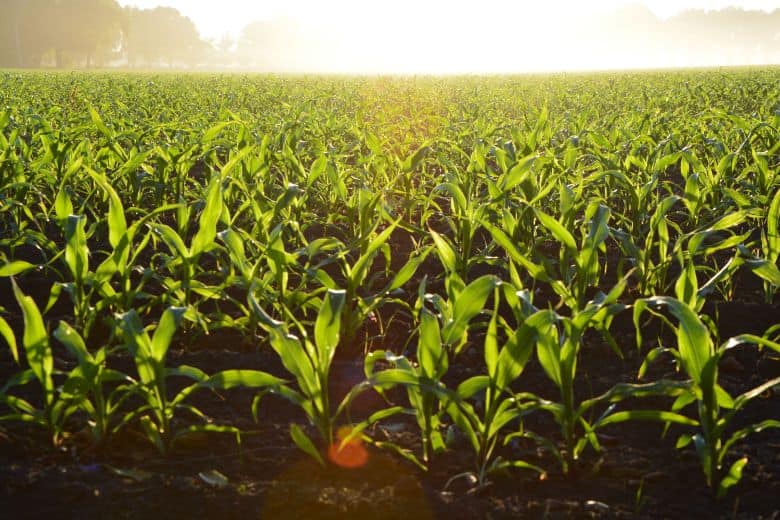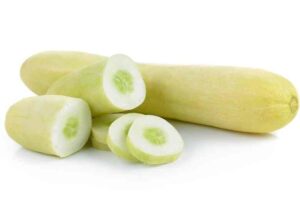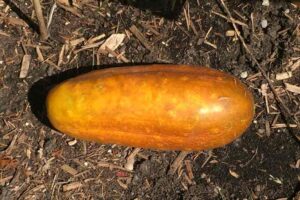
If you plant corn too close together, it will result in a decrease in the size and amount of the crop. The corn plants will compete for resources such as sunlight, water, and nutrients, resulting in stunted growth. As the plants compete for these resources, they will also be more prone to diseases and insects, which can further reduce the yield.
Additionally, too many plants in a small area can result in a decrease in air circulation, increasing the likelihood of fungal diseases. To ensure a healthy crop of corn, it is important to space the plants adequately to allow them to grow and thrive.
Impact of Planting Corn Too Close Together
When corn plants are overcrowded, they compete with each other for vital resources, including sunlight, water, and nutrients. This intense competition can have several detrimental effects on the growth and development of the crop. Here are some key impacts of planting corn too close together:
1. Stunted Growth:
Corn plants that are crowded together struggle to grow and reach their full potential. The limited space inhibits root development and prevents each plant from accessing sufficient water and nutrients in the soil. As a result, the plants may become stunted and have a reduced ability to produce strong stalks and large ears of corn.
2. Decreased Air Circulation:
Dense corn plantings impede proper air circulation within the canopy. Poor airflow creates a favorable environment for diseases, such as fungal infections and molds, which can spread rapidly and compromise the overall health of the crop.
3. Increased Vulnerability to Pests:
Overcrowded corn plants are more susceptible to pest infestations. The lack of space between plants makes it easier for pests, like corn borers or armyworms, to move from one plant to another, leading to widespread damage.
4. Nutritional Deficiencies:
Corn plants compete fiercely for nutrients in the soil. When planted too close, they deplete the available nutrients at a faster rate, resulting in nutritional deficiencies and weakened plants. This can manifest as yellowing leaves, poor ear development, and reduced yield.
Signs of Corn Crowding
Identifying the signs of corn crowding is crucial for timely intervention and corrective measures. Here are some common indicators that your corn plants are too close together:
- Restricted Growth and Thin Stalks: Overcrowded corn plants often exhibit restricted growth, with shorter and thinner stalks compared to properly spaced plants. The limited space inhibits the plants’ ability to develop a strong support structure, making them more prone to lodging (falling over) during strong winds or heavy rainfall.
- Smaller Ears and Poor Kernel Development: In crowded corn plantings, the ears may be smaller in size, and the kernels may be underdeveloped. The competition for resources prevents each plant from forming fully filled ears with plump, well-developed kernels.
- Increased Disease and Pest Pressure: Corn plants grown too close together are more susceptible to diseases and pest infestations. Look for signs of fungal infections, such as mold growth on leaves or stalks, or damage caused by common corn pests like corn borers or armyworms.
Factors that Affect Corn Planting Distance
Several factors influence the ideal planting distance for corn. Understanding these factors can help you make informed decisions when planning your corn crop. Here are some key factors to consider:
- Corn Variety: Different corn varieties have varying requirements for spacing. Some varieties, such as sweet corn, generally require closer spacing, while others, like field corn, may need wider spacing. Refer to the specific variety’s recommendations for optimal spacing.
- Soil Fertility: Soil fertility plays a significant role in determining corn planting distance. Nutrient-rich soils can support denser plantings, while soils with lower fertility may require wider spacing to ensure sufficient nutrient availability for each plant.
- Moisture Availability: Corn plants need an adequate water supply to thrive. If you have access to ample irrigation or live in an area with consistent rainfall, you may be able to plant corn at closer distances. However, in regions with limited water availability, wider spacing allows each plant to access the necessary moisture.
- Growing Conditions: Environmental factors such as temperature, sunlight, and wind patterns can impact corn planting distance. In areas with hot climates or intense sunlight, wider spacing can help prevent excessive heat stress on the plants. Similarly, if your location is prone to strong winds, providing more space between plants can reduce the risk of lodging.
How to Plant Corn at the Appropriate Distance
Planting corn at the appropriate distance is crucial for ensuring healthy growth and maximizing yield. Here’s a step-by-step guide on how to plant corn at the right spacing:
Step 1: Determine the Recommended Spacing:
Before planting, refer to the specific corn variety’s recommendations for optimal spacing. This information can usually be found on the seed packet or provided by the seed supplier. The spacing may be indicated in terms of inches or feet between plants and rows.
Step 2: Prepare the Soil:
Corn thrives in well-drained, fertile soil. Before planting, prepare the soil by removing any weeds, rocks, or debris that may interfere with the planting process. Use a garden fork or tiller to loosen the soil and improve its structure.
Step 3: Create Planting Rows:
Determine the spacing between rows based on the recommended guidelines. Typically, rows are spaced between 30 to 36 inches apart. Use a garden rake or hoe to create straight and evenly spaced rows in your garden bed.
Step 4: Plant the Seeds:
Dig a small hole or furrow in the soil using your finger or a garden trowel. The depth of the hole should be around 1-2 inches. Place one corn seed in each hole, ensuring they are evenly spaced according to the recommended distance between plants.
Step 5: Cover and Firm the Soil:
Gently cover the seeds with soil and lightly press down to ensure good seed-to-soil contact. Avoid compacting the soil too much, as it can hinder seed germination.
Step 6: Repeat the Process:
Continue planting corn seeds along the row, maintaining the recommended spacing between each seed. Leave the recommended gap between rows to provide enough room for the corn plants to grow and develop.
Step 7: Water the Seeds:
After planting, water the soil thoroughly to provide moisture for the germination process. Maintain consistent moisture levels throughout the growing season, especially during dry periods.
Step 8: Thin Out Excess Seedlings:
If you accidentally planted seeds too close together, thin out the excess seedlings once they have emerged and reached a manageable height. Thin the plants to the recommended spacing, allowing the remaining plants enough space to grow and thrive.
Step 9: Mulch and Weed Control:
Apply a layer of organic mulch, such as straw or wood chips, around the base of the corn plants. Mulching helps retain soil moisture, suppresses weed growth, and maintains a more even soil temperature.
Step 10: Monitor and Maintain:
Regularly monitor the corn plants for signs of growth, nutrient deficiencies, pests, or diseases. Provide appropriate care, including watering, fertilizing, and addressing any issues promptly.
Conclusion
Planting corn too close together can lead to poor yields due to overcrowding and inadequate sunlight and nutrient access.
Proper spacing is crucial for the successful growth and productivity of corn plants. Planting corn too close together can lead to a range of issues, including stunted growth, disease susceptibility, and decreased yield. By understanding the impact and signs of corn crowding, as well as following the appropriate planting process and considering relevant factors, you can avoid this common gardening mistake.
Remember to consult the specific recommendations for your corn variety and take into account soil fertility, moisture availability, and growing conditions when determining the ideal planting distance. By giving each corn plant enough space to develop strong roots, access sunlight, and acquire essential nutrients, you will increase the chances of a bountiful harvest and enjoy the full potential of your corn crop.





One Comment